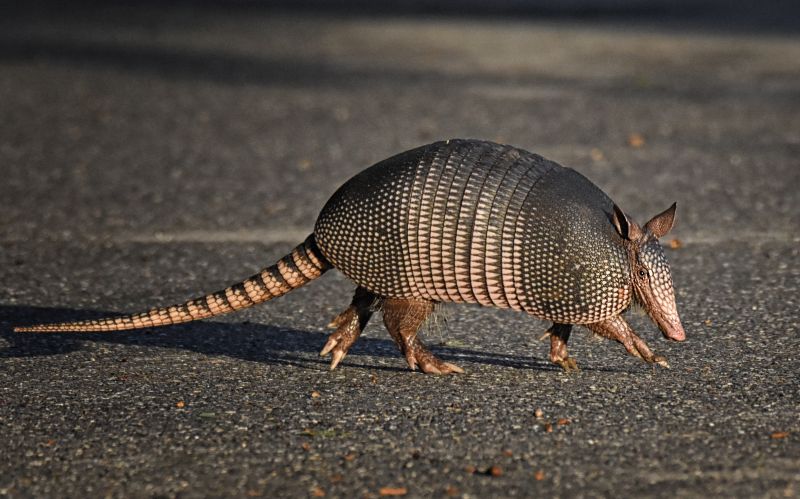Leading Products for Effective Armadillo Control Service Solutions
Discover top-rated tools and equipment designed to help you manage armadillo problems efficiently and safely.
 Controlling armadillo activity around residential and commercial properties requires a combination of effective products and strategic application. Armadillos are known for their burrowing habits, which can lead to damaged lawns, disturbed landscapes, and compromised foundations. Selecting the right tools and products is essential for humane and efficient management. Various deterrents, repellents, trapping devices, and barriers are available to help property owners address armadillo presence. Understanding the unique behaviors of armadillos and the features of different products can aid in choosing the most suitable solutions for specific situations.
Controlling armadillo activity around residential and commercial properties requires a combination of effective products and strategic application. Armadillos are known for their burrowing habits, which can lead to damaged lawns, disturbed landscapes, and compromised foundations. Selecting the right tools and products is essential for humane and efficient management. Various deterrents, repellents, trapping devices, and barriers are available to help property owners address armadillo presence. Understanding the unique behaviors of armadillos and the features of different products can aid in choosing the most suitable solutions for specific situations.
Top Overall Option
Underground Barrier Fencing System
A durable underground fencing system designed to prevent armadillos from burrowing into designated areas. Made from sturdy materials, it is installed below ground to create an effective physical barrier that deters armadillos from entering lawns, gardens, and flower beds. This type of fencing is often customizable to fit different property sizes and shapes, offering a long-term solution that requires minimal ongoing maintenance. Proper installation is key to maximizing its effectiveness, and it is compatible with other deterrent methods for comprehensive control.
Types of Products For Armadillo Control Service
Burrow Detectors and Cameras
Devices that help locate active burrows and monitor armadillo activity with visual confirmation, aiding targeted control efforts.
Physical Barriers and Fencing
Underground fencing and barriers designed to prevent armadillos from digging into protected areas.
Repellents and Sprays
Chemical or natural repellents that discourage armadillos from frequenting specific zones.
Live Traps
Humane traps for capturing armadillos for relocation, often used in conjunction with other control methods.
Noise and Vibration Devices
Electronic devices that emit sounds or vibrations intended to deter armadillos from settling nearby.
Soil Conditioners and Deterrent Powders
Products that alter soil scent or texture to make areas less attractive to burrowing animals.
Chemical Repellents
Commercial-grade chemical repellents formulated for outdoor use to discourage armadillo activity.
Motion-Activated Sprinklers
Sprinklers that activate upon movement, startling armadillos and discouraging their presence.
Garden and Yard Maintenance Tools
Tools for sealing holes, filling burrows, and maintaining yard health to reduce attraction.
Natural Deterrent Plants
Certain plants or herbs that may repel armadillos when planted around vulnerable areas.
Foundation and Landscape Sealants
Sealants used to close off entry points and prevent burrowing near foundations or under decks.
Popular Choices
Pre-packaged fencing solutions designed for easy installation around gardens and lawns.
Automatic sprinklers that activate when movement is detected, providing a humane deterrent.
Humane traps commonly used for capturing armadillos for relocation purposes.
Electronic devices emitting high-frequency sounds intended to repel armadillos.
Materials designed to fill and seal burrows to discourage further digging activity.
Sprays made from natural ingredients that can be applied around yard perimeters.
Devices that produce vibrations or sounds to make areas less attractive to armadillos.
Mesh or netting materials used to protect specific plants or areas from burrowing.
Powders that change soil scent or texture to deter burrowing animals.
Lights activated by motion that can help deter nocturnal armadillo activity.
Effective armadillo control often involves multiple approaches. Physical barriers such as underground fencing can prevent access to gardens and lawns, while repellents may discourage armadillos from frequenting certain areas. Trapping devices are useful for humane removal, especially when combined with proper relocation methods. Additionally, noise and vibration devices can sometimes serve as deterrents, although their efficacy varies. When implementing control measures, it is important to consider safety, local regulations, and the humane treatment of animals.
Proper maintenance of your yard, removing potential food sources, and sealing entry points can complement product use and enhance overall control efforts. Regular monitoring and prompt action at signs of armadillo activity can help prevent extensive damage. Combining physical, chemical, and behavioral strategies often yields the best results. It is advisable to select products that align with your specific needs, property layout, and local guidelines to ensure effective and responsible armadillo management.
Key Buying Considerations
- Effectiveness of the product for your specific property and armadillo activity level.
- Ease of installation and maintenance requirements.
- Humane treatment and compliance with local wildlife regulations.
- Durability and weather resistance of fencing and barriers.
- Compatibility with other control methods you may be using.
- Size and scope of the area you need to protect or control.
- Potential impact on other wildlife and pets.
- Cost and long-term value of the product.
- Availability of customer support and warranty options.
- Reviews and feedback from other users in similar situations.
- Chemical safety and environmental considerations.
- Ease of access for periodic inspections and repairs.
- Ability to customize or adapt the product to changing needs.
- Effectiveness of deterrents versus trapping or sealing methods.
- Local regulations regarding animal control and trapping.
